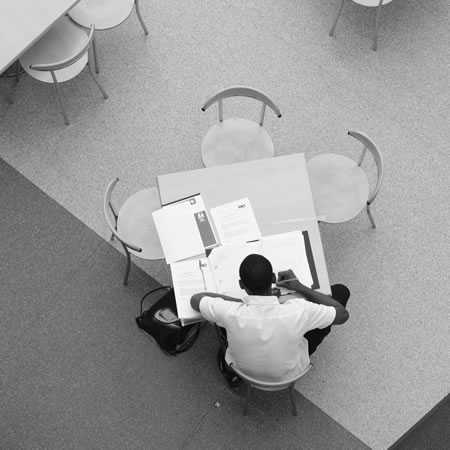
I have written before about informal learning, and how that once you start designing informal learning it becomes formalised. What you can do is create spaces, as well as provide technology, that can encourage informal learning.
A simple example of this is providing ubiquitous Wi-Fi across the campus, especially in social and communal areas.
What would you design in your informal learning spaces if money no object?
This was the brief we had in a workshop at the Leeds Business School at the recent ALT Learning Spaces SIG in January.
So the brief was to think about how an existing space could be refurbished into an informal learning space. There were three scenarios, a very limited budgetary option, a classic budgetary scenario and ours, which was “budget, what budget!”
We were split into groups, two groups had a (realistic) limited budget to work with, another group a bigger budget and our group… well our group had an unlimited budget. We could go to town.
There is still something useful about this kind of scenario, even though it isn’t realistic, as with any blue skies thinking, you can start with unrealistic and unattainable outcome, but bringing that back down to reality, means that some things will remain.
The space we were working with was a real space, and is in the West Park Teaching Hub at Loughborough University. This is a round space, currently divided into two semi-circle teaching spaces. The space wasn’t working as planned, in the main due to noise leaking between the spaces.
The space was circular and I immediately thought lets go right out there and think about doing something very different, so I threw into the initial discussion the idea of either building a fairground carousel, my thinking was of the double decker ones you see in Germany and France.
My other idea, which the group liked more, was let’s build a treehouse in the space.
The seminar room we were in had interactive whiteboards for each group, so I got to work to “sketch” a treehouse concept for the space.
The key concept was to bring in nature into the space, both in terms of the tree, but also real foliage and natural light.
The other aspect was to design the space to create various different ways in which the space could be used for informal learning, both for individuals and for groups.
One thing I have done in spaces I was managed (some years ago) was designing the space to allow for quick (or light) informal learning and spaces for longer deeper informal learning. I took my cue from coffee shops, where though they basically sell coffee, there are different coffee drinking scenarios. There are those people who want to pop in, sit down, have a quick coffee and then go. Similarly there are two people, who want a break from shopping, so want to chat and have a coffee. Then there are the people who want a longer coffee drinking experience (maybe they are going to have cake or a sandwich). They will spend much longer in the coffee shop, they may even have a second coffee. Sometimes a group will come in to discuss and chat over coffee. Then there are those looking for a place to use their laptop.
In a lot of coffee shops, you will see they design the space to meet these differing needs. Near the entrance are usually tables and chairs and occasional soft seating. As you venture deeper into the coffee shop, you will find sofas and more comfortable seating, but also larger tables and chairs (for groups).
So back to the learning space design, we wanted to do something similar. We wanted a range of furniture that would allow for multiple and varied informal learning scenarios. Places where a learner could sit down and check something on their laptop. Tables that would allow a couple of learners to grab a coffee and chat about their most recent lecture. Furniture for longer and deeper informal learning scenarios, working on an essay or a group project.
We felt that lighting was important and would both encourage and discourage informal learning. Everyone felt coffee (and snacks) was important, but were aware of the noise issues that this could cause. Acoustical planning would be undertaken to create quiet spaces and ensure noisy spaces could be contained and the sound absorbed by the furniture and plants.
Technology would be embedded and integrated into the treehouse. There would be ubiquitous Wi-FI, well would you expect anything less. There would be places to charge devices. Screens would be available for small group work, as well as traditional whiteboards and other areas to write on.

We also thought a big screen surrounding the tree could be used to change the mood of the space, as well as for information.
It was a fun task and we enjoyed working together. It certainly wasn’t a realistic option, but some of the concepts and ideas could certainly be utilised in a real budgetary envelope when designing a space for informal learning.


















